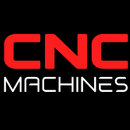Metal vs. Plastic CNC Machining: Costs, Applications, and Best Practices

Metal vs. Plastic CNC Machining: Costs, Applications, and Best Practices
In the CNC machining world, choosing between metal and plastic materials can drastically impact production cost, lead times, and product functionality. Understanding how each material performs, its best-fit applications, and the right machining parameters is key to achieving consistent quality. Below, we compare metal vs. plastic CNC machining, explore typical tolerances, and offer tips on fine-tuning speeds and feeds for minimal warp or friction burns.
1. Key Differences Between Metal and Plastic Machining
A. Material Costs and Availability
- Metals (e.g., aluminum, steel, titanium):
- Often pricier per pound.
- Typically more recycling opportunities for scraps (especially aluminum).
- Popular in industrial or high-performance parts requiring durability.
- Plastics (e.g., ABS, Delrin®, Nylon, PEEK):
- Generally lower material cost (though specialized engineering plastics can be expensive).
- Lightweight, simplifying shipping and assembly.
- More limited recycling pathways, though certain resins can be reprocessed.
B. Mechanical Properties
- Metals:
- Higher tensile strength, temperature resistance, and rigidity.
- Excellent for parts under high stress, thermal loads, or needing robust durability.
- Plastics:
- Low density, suitable for weight-critical designs.
- Good chemical resistance (depending on resin type).
- Potential for flexibility, shock absorption, or insulation (electrical/thermal).
C. Machinability and Complexity
- Metals:
- Strong, stable bases for tight tolerances, particularly with advanced alloys.
- Can demand more powerful CNC spindles and robust tooling to handle cutting forces.
- Thicker cross-sections less prone to warp under cutting forces.
- Plastics:
- Softer, easier to cut, but more susceptible to friction burns or warping from heat buildup.
- Thin walls or complex shapes risk deformation if speeds/feeds aren’t carefully managed.
2. When Each Material Excels
Ideal Use Cases for Metals
- Aerospace and Defense: Titanium or aluminum components for structural strength with minimal weight.
- Automotive / Motorsport: Steel or aluminum engine parts, transmission cases, brackets.
- Industrial Machinery: Gears, shafts, fittings that endure heavy loads or high temperatures.
Ideal Use Cases for Plastics
- Medical Devices and Lab Equipment: Inert plastics (e.g., PEEK) for biocompatibility; easily sterilized.
- Electronics Housings: ABS or polycarbonate enclosures for insulation and shock resistance.
- Prototyping or Low-Volume Runs: Rapid turnaround of non-structural components that don’t need metal’s rigidity.
3. Typical Tolerances and Dimensional Stability
Metals
- Common Tolerances: ±0.001" to ±0.005" (±0.025 mm to ±0.127 mm) for general milling.
- High-Precision Work: ±0.0005" (±0.0127 mm) or tighter in aerospace or medical parts.
- Stability Factor: Metals maintain shape better under machining stress, less prone to thermal expansion except at very high temperatures.
Plastics
- Common Tolerances: ±0.002" to ±0.010" (±0.051 mm to ±0.254 mm) or more, depending on resin and part geometry.
- Heat and Moisture Sensitivity: Nylon, for example, absorbs moisture and expands, necessitating design allowances.
- Warp and Shrinkage: Crisp edges or thin features can distort if the tooling setup and speeds/feeds are not carefully managed.
4. Fine-Tuning Speeds/Feeds to Minimize Warp and Friction Burns
A. Metals: Cutting Hard Materials
- Speeds and Feeds
- Slower spindle speeds and moderate feed rates are typical for steel or harder alloys, minimizing tool wear and heat buildup.
- Aluminum can tolerate higher RPMs, but watch for chip evacuation to avoid recutting chips.
- Coolant Use
- Flood cooling with water-soluble oils or full oil lubricants helps regulate temperature and extend tool life.
- Ensure consistent coolant flow for stable part temperatures and dimensional accuracy.
- Tool Selection
- Carbide or coated carbide inserts handle wear better than HSS in high-volume metal cutting.
- For smaller or precision features, consider micro-grain carbide with suitable geometry.
B. Plastics: Managing Heat Buildup
- Speeds and Feeds
- Lower the Spindle RPM: Prevents friction melting and “gumming” of plastic.
- Increase Feed Rate: Helps ensure chips are evacuated rapidly, carrying away heat.
- Use Sharp Cutting Edges: Dull tools generate excess friction and burrs.
- Coolant or Air Blasts
- Using air blasts instead of liquid coolant in some plastics (e.g., Nylon, Delrin) keeps moisture absorption low.
- Light mist lubricants can help dissipate heat without saturating the part.
- Clamping and Fixturing
- Avoid over-tightening, which can warp soft materials.
- Use vacuum tables or softer jaws to support delicate surfaces without inducing stress.
Cost Considerations: Metal vs. Plastic
- Material Costs
- Metal alloys like titanium or Inconel command a premium.
- Many plastics, particularly specialized engineering grades (PEEK, Ultem), can also be pricey but may offer unique advantages.
- Machining Times
- Metals typically require more robust tooling and can have longer cycle times due to lower cutting speeds in harder alloys.
- Plastics can be cut faster but risk higher scrap rates if friction issues aren’t managed.
- Post-Processing
- Metals might need deburring, anodizing, or heat treating.
- Plastics often skip finishing steps but might require heat treatment for stress relief in high-performance resins.
Concluding Best Practices
- Select the Right Material for Performance Demands
- Consider mechanical loads, temperature extremes, and tolerance requirements when deciding between metal and plastic.
- Optimize Speeds and Feeds
- For metals, prioritize consistent coolant and robust tooling.
- For plastics, moderate spindle speeds and faster feeds prevent heat buildup and warping.
- Plan Tolerances and Finishes
- Clarify which dimensions need tight tolerances and which can be looser, saving money in machining time.
- Test and Validate
- Run trial cuts on sample stock and measure critical features.
- Iterate toolpaths or fixtures if dimensional stability issues arise—particularly with large plastic parts.
By tailoring CNC machining approaches to the unique properties of metals and plastics, manufacturers can minimize scrap, control costs, and ensure stable, high-quality parts. Balancing material choice, dimensional goals, and toolpath design helps shops consistently deliver on customer expectations—whether producing robust metal housings for aerospace or lightweight plastic components for consumer electronics.


